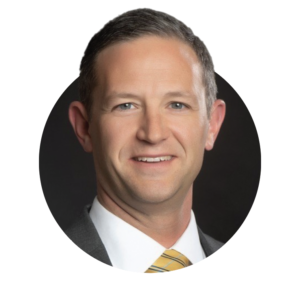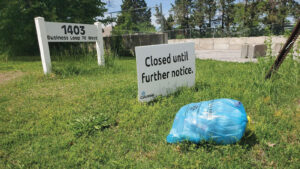There are a lot of kids in COMO. There are the 18-and-unders still at home, plus plenty of college “kids” who have technically reached the age of maturity but are still dependents of their folks back home. Many collegians act their age, but many don’t — just look around town.
Kids are a big business in COMO. We have one of the biggest public school districts in the state, plus numerous private schools. Plenty of local stores sell tons of kid stuff. Local restaurants host kid birthday parties. Local kids participate in all these sports leagues, and many youth tournaments frequent the accommodating facilities around town.
Daycare blues
And there’s a lot of demand for daycare centers – though there never seems to be nearly enough of them. In fact, ask around among parents of young kids and you’ll likely hear a few earfuls of frustration if not stressful stories of frantically trying to find one for their kid(s) at some point. Or perhaps a proactive parent who might have put in a future reservation at a coveted provider, even before their kid was born.
The lack of daycare openings is one of those mysteries of modern life, like medical billing, or how potholes multiply all over town.
Once a parent secures a provider, it’s not cheap. While middle-income families shift the household budget around to make it work, lower-income households face more drastic decisions.
I used to work with a single mother with a young child and we often chatted on this subject. She once confided an intention to have a second child but couldn’t afford to — yet. That is, she was waiting until her toddler daughter entered kindergarten, as she could not afford to pay for two kids in daycare at once. Golly.
It’s a tough service to offer, too. For one, it entails long hours, exhaustingly attentive work, and doesn’t pay a lot.
Parenting can be a joy in one’s life, but not always, so imagine watching somebody else’s kid all day. It’s even different from the calling of school teaching where there’s a structured curriculum and the kids are old enough to walk and talk.
A sudden state regulation change a few years ago lowered the maximum number of kids per worker because everybody wants safety. But an unintended consequence was many individual services had to suddenly turn kids away, throwing many working parents for a loop.
COMO has historically had ultra-low unemployment and we now have a near-universal labor shortage. It’s become a normal challenge to meet somebody for lunch on a Monday, as not every place has staff to be open every day. If food service waitstaff is in short supply, service jobs like daycare centers, nursing homes, and the like have an even tougher slog to fill.
I hear repeatedly of hiring managers in these fields sharing examples that go something like this: post a job online (here we go!), receive 100+ applicants (great!), weed out A LOT of scary resumes (ugh). Boil it down to maybe a handful of maybes, and interview two or three to get one to accept an offer (great!). But they then might burn out after a short period (oh no), or ghost after a day or two (huh?), if not even show up on day one (what the … ?). This is apparently a national phenomenon these days, a sort of new normal in pockets of the HR field.
Fewer kids
The number of kids in COMO has continued to increase over a long period, though demographers have warned of declining birth rates nationally. The best estimates from Columbia Public Schools project enrollment basically plateauing just above 18,000 for the next decade or so.
Forever up to this point a new school has been built every few years, but that demand is tapering off. This affects school staffing trends, as well as real estate needs, retail demand, and so on throughout the local economy.
Higher ed is obviously a big industry in COMO, so the kid population trends have been flowing through as fewer potential college age “customers,” as well.
And after a few generations among middle-class Americans that a four-year degree is a default expectation, there’s the stiffening headwind of public opinion further questioning the value of college at all. The Wall Street Journal released a poll on March 31 that was conducted with the University of Chicago, with some eye-opening findings. For the first time, over half of Americans think achieving a college degree is not a good value. Fifty-six percent now agree with the statement that college is “not worth the cost because people often graduate without specific job skills and with a large amount of debt to pay off.” Only 43 percent affirmed that college is “worth the cost because people have a better chance of a good job and earn more income over their lifetime.”
Those ages 18-34 are the most pessimistic. Compared to the last such poll in 2017, those aged 65 and older shifted the most toward a “no” response, as did women at large.
While college costs keep drifting upward, the student loan burdens of many Americans keep getting more political; well, along with about any other topic on campus.
This is not doomsaying, though. Though the higher ed industry, which COMO is heavy in, is seeing a tapering of potential college-age “customers,” a flight to quality is more likely than the college industry cratering. This trend offers our several colleges here an opportunity to retool for 21st-century education needs and enhance their value propositions to future students, parents, the public, and taxpayers.
There’s also the opportunity to adjust learning paths to job and life skill diversity. More teenagers are taking dual enrollment classes to earn college credits while still in high school. Work/study, apprenticeships, and technical schools are all blooming to fit real needs, which is all good.
Yes, as Bob Dylan sang in 1964 — almost exactly 60 years ago — “the times they are a-changin.’” And just like they did 60 years ago, we’ll figure out which changes work and which ones still need work. At least there are still enough kids around to get it right if we fall short. But we owe it to them not to.

Steve Spellman is a lifelong Columbia-area resident and political observer.








